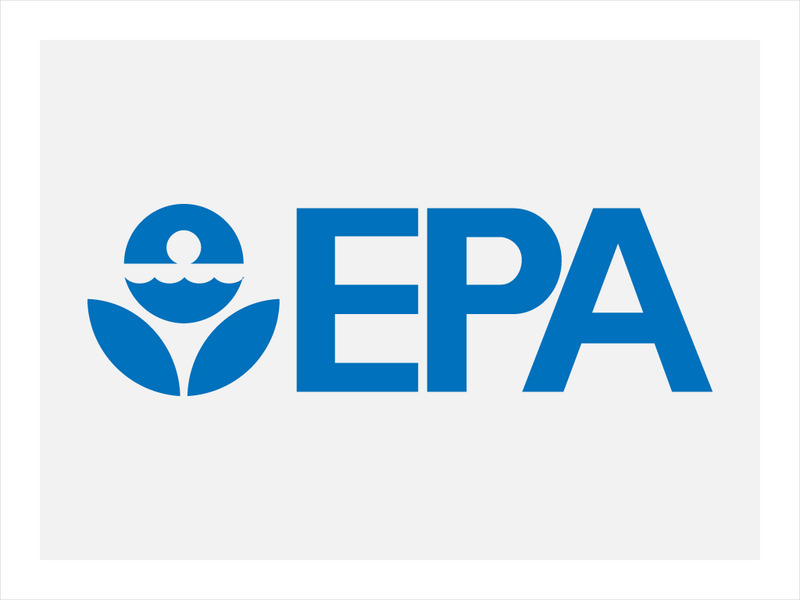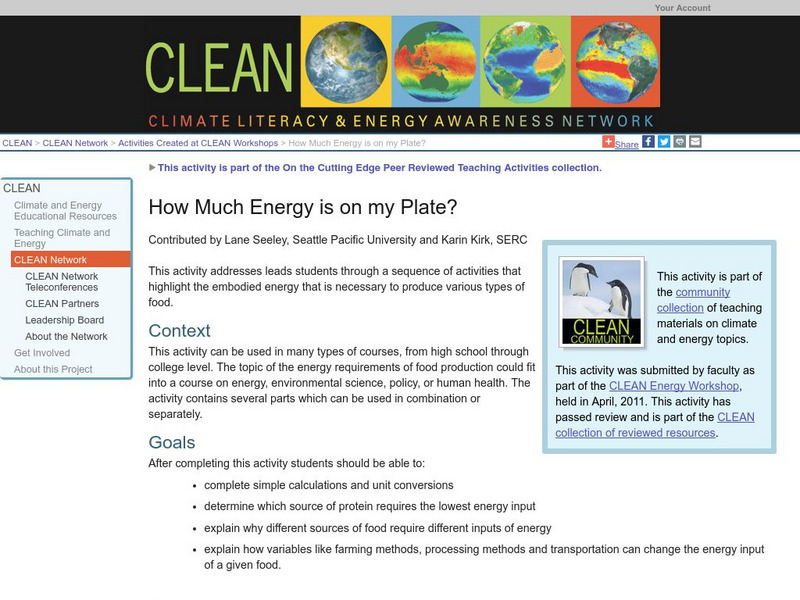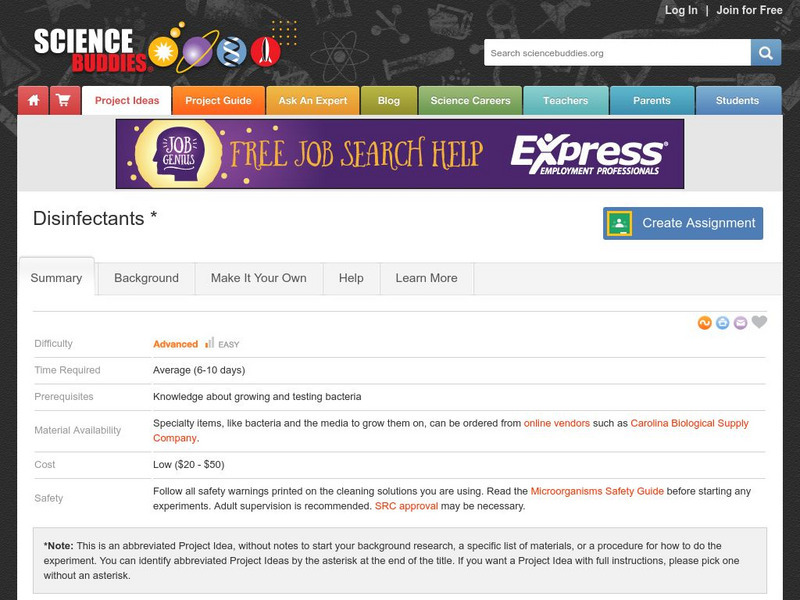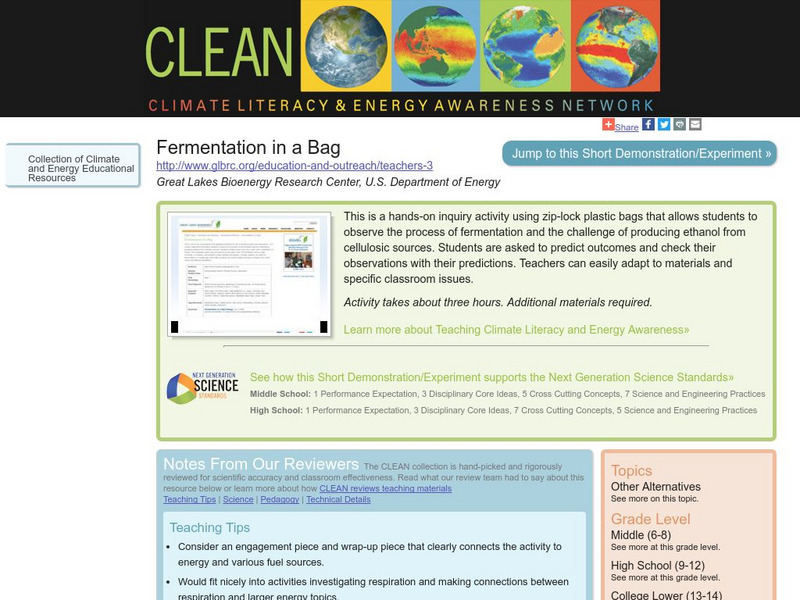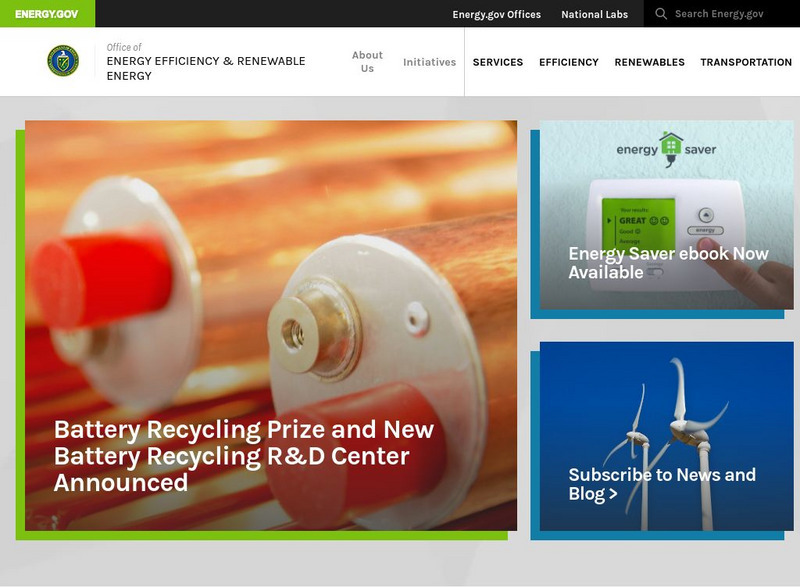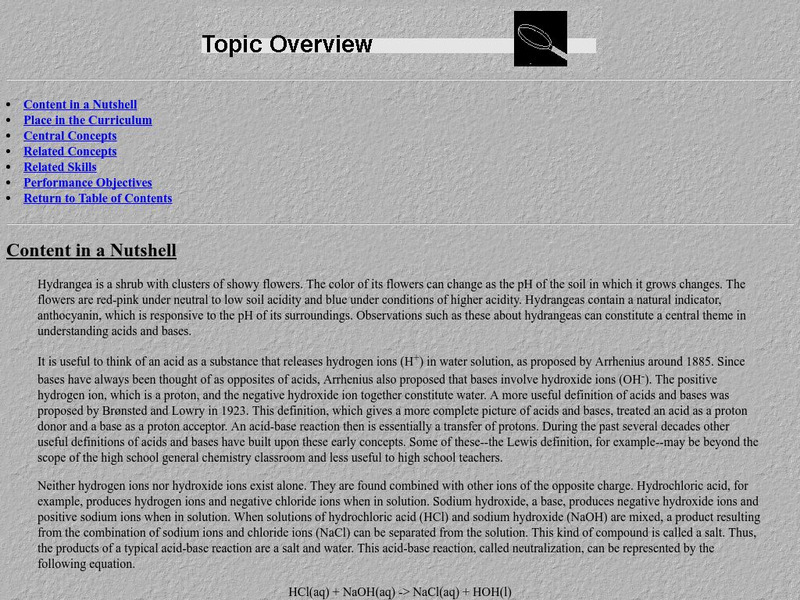Hi, what do you want to do?
Curated OER
Where's the Evidence?
Eighth graders observe evidence of chemical reactions. In this chemical reactions lesson students study chemical processes and complete a lab activity.
Curated OER
Computer Based Energy Projects
Students use the Internet to research renewable energy. In this science lesson, students work on projects to help them understand how we use energy around the globe. Students analyze distribution of renewable and non...
Curated OER
Solar
Students study solar energy. For this renewable energy lesson students complete several lab activities using different controls and variables.
Curated OER
Raising the Bar on How Business Gets Done
Students explore the concept of energy bar sales. In this energy bar sales lesson, students read an article about the sales of energy bars. Students discuss what is meant by red roads and white roads in the article. Students search a...
Curated OER
Mixed Phrasal Verbs
In this grammar worksheet, students study mixed phrasal verbs. Students complete an interactive worksheet consisting of 20 fill in the blank questions and the ability to self check directly online.
Curated OER
Breaking News English: Cigarette Packets to Carry Gory Pictures
In this English worksheet, students read "Cigarette Packets to Carry Gory Pictures," and then respond to 1 essay, 47 fill in the blank, 7 short answer, 20 matching, and 8 true or false questions about the selection.
US Environmental Protection Agency
Epa: The Plain English Guide to the Clean Air Act
This 27-page booklet explains the Clean Air Act using everyday English.
Climate Literacy
Clean: How Much Energy Is on My Plate?
Using concept sketches, students study energy requirements of food production explain why different sources of food require different inputs of energy. They also investigate how variables like farming methods, processing methods and...
US Environmental Protection Agency
Epa: Clean Air Markets Program
Market-based regulatory programs designed by the EPA, with information for consumers and industry cap-and-trade policies, Clean Air Act, and other government-sponsored efforts to reduce air pollution.
Science Buddies
Science Buddies: Disinfectants
This experiment asks you to compare different types of cleaning agents. Household cleaning products, like bleach or Lysol, are included to see which ones kill the most bacteria. Different brands of antibacterial hand soap or dish soap...
Science Education Resource Center at Carleton College
Serc: Analyzing P H: Comparing Citrus Fruits, Stain Removers and a Green Product
The students will analyze the pH of four citrus fruits: lime, lemon, orange, and a grapefruit, and then they will analyze the pH of four different types of stain removers: Shout Advanced, Spray 'n Wash Max, Oxi Clean Laundry, and Clorox...
Climate Literacy
Clean: Life Cycle Assessment of Biofuels 101
Multi-lesson activity in which students conduct a life cycle assessment of energy and carbon dioxide used and produced in ethanol production.
Climate Literacy
Clean: Us Energy Production and Consumption
In this lesson students will compare and contrast regional energy production of 5 different US regions, including California, Illinois, Pennsylvania, Texas, and Washington. Students will also analyze production and consumption data of US...
Climate Literacy
Clean: Carbon Dioxide Sources and Sinks
For this lab activity, students use a chemical indicator (bromothymol blue) to detect the presence of carbon dioxide in animal and plant respiration and in the burning of fossil fuels and its absence in the products of plant...
Climate Literacy
Clean: Evaluating Woody Biomass Options for North Carolina's Electricity Future
For this activity, students learn about the pros and cons of co-firing woody biomass fuels with coal to produce electricity.
Climate Literacy
Clean: Fermentation in a Bag
A hands-on inquiry activity using zip-lock plastic bags that allows students to observe the process of fermentation and the challenge of producing ethanol from cellulosic sources. Students are asked to predict outcomes and check their...
US Department of Energy
U.s. Department of Energy: Energy Savers
Find information on everything from buying energy-efficient products to using the proper landscaping for particular climates to conserve resources. Starting with an energy assessment, this website will help users reduce their consumption...
US Department of Energy
U.s. Department of Energy: Energy Efficiency and Renewable Energy
Access to information, policy initiatives, advice, and analysis on issues of energy efficiency and renewable energy, from the U.S. Department of Energy. Its network is responsible for tracking the technological, economic, and...
Science Buddies
Science Buddies: Project Ideas: Green Detergents Less Toxic Than Conventional?
In this science fair project, test the toxicity of "green" and conventional detergents, using worms as test organisms. The Science Buddies project ideas are set up consistently beginning with an abstract, objective, and introduction,...
Alabama Learning Exchange
Alex: It Is Easy Being "Green" Part Iii of Iii
In this third and final installment of the "Green" series, the students will work in their ability groups to create a commercial to advertise their green cleaning product. Students will create a logo and a name brand and market their...
Science Buddies
Science Buddies: Solubility of Proteins
Some proteins are soluble in aqueous solutions and some are not. Insoluble proteins can be a problem because the proteins can form large aggregates in solution which are difficult to purify, crystallize, and use in experiments. Compare...
US Department of Energy
Us Dept of Energy:mining Silicon Througha Single Displacement/redox Reaction
Students will participate in a laboratory investigation that models the production of silicon. The activity investigates the sources, uses, properties, and importance in the fields of photovoltaics (solar cells/renewable energy) of silicon.
Science Buddies
Science Buddies: How Fast Can You Get It Done?
Do you hate doing the dishes, folding laundry, or cleaning up your room? Do you wish you could figure out a way to get these tasks done faster? Figure out how as you take on the role of a production engineer in this fun activity!
Oklahoma State University
Oklahoma State University: Acid Base Overview
Beginning with the example of the hydrangea, this page gives a good overview of acid-base chemistry.











